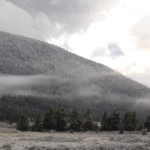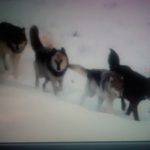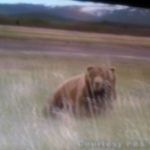The paths of grizzly bears and humans often collide, with fatal consequences for both parties. Despite protected lands such as national parks, the former’s survival depends upon establishing roaming corridors across private land and highways. The Vital Ground Foundation is doing just that.
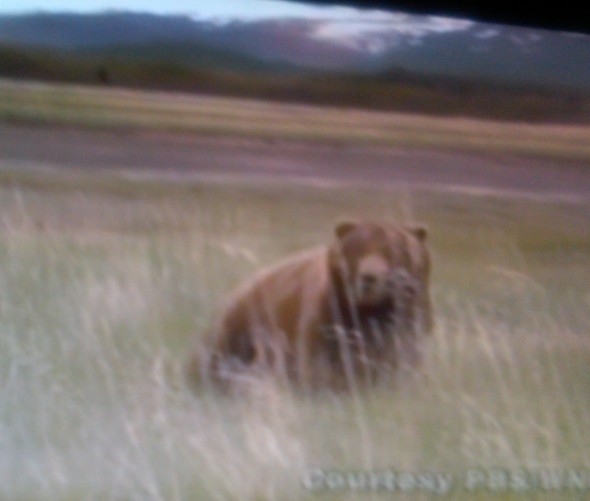

Grizzlies and Humans in Confrontation
The paths of grizzly bears (Ursus arctos) and humans have uncomfortably collided with killings of hikers in Yellowstone National Park and an additional attack in Glacier National Park in Montana. Today approximately 1,500 grizzlies roam the mountains and valleys of the lower 48 US states, down from 50,000 to 100,000 in 200 years of European settlement. Refugee of a long history of persecution, 98 percent of its historic habitat has been consumed for housing and commercial development, railroad lines, highways, mines, and cattle ranches. The Griz even appears on the state flag of California, but the last one was shot in 1922.
In 1975, the grizzly was listed as “threatened” on the Endangered Species List, and still survives in five distinct wilderness areas, national forests, and national parks in Washington, Idaho, Montana, and Wyoming. In Yellowstone, the population grew steadily from 200 to over 600 and the population was delisted in March 2007. Unfortunately, this decision remains controversial, as the park stands as an ecological island in a sea of ranches, highways, and tourist and ski communities, without viable linkages to protected habitat areas: hence, griz shot, run-over, or starved into trash-picking.
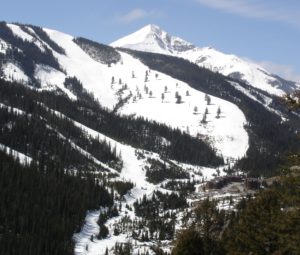

Furthermore, national park visitors sometimes do foolish things. Upon spotting a bear in a meadow, people leave their cars and approach within 15 to 20 feet (supposed to stay 100 yards away). Bear management biologist Kerry Gunther (All Animals Magazine) has seen as many as 100 people around a single bear (a black, not a grizzly in that case), gawking. Injuries in these situations are rare, however, as bears want nothing to do with crowds of humans.
Alaska remains a stronghold, with 25,000 to 39,000 brown bears, but development there presents threats as well. Despite protected lands such as national parks, the grizzly requires room to roam and seasonally feed across private land and infrastructure. Valley bottoms, alpine meadows, paths along streams, and lower elevation hillsides provide essential corridors and feeding grounds. Unfortunately, humans appreciate these too, and humans consume more land and kill or displace more bears. Habitat connections between protected ecosystems in the wildest, and most imperiled, areas of US and Canada must be established. As well, important parcels should be acquired and protected in order to ensure survival of the Great Bear.
STORY: Yellowstone Druids: The Last Valley of the Wolves
Vital Ground Conservation
In 1990, Doug Seus and his wife, Lynne, founded the Missoula-based Vital Ground Foundation and, one year later, purchased a 240-acre parcel on the Rocky Mountain Front about 25 miles west of Choteau, Montana. Their goal was to preserve habitat for a recovering grizzly population in western part of the state.
Earlier in summer 2011, Vital Ground announced its latest land acquisition in the Northern Rockies: a 71-acre, low-elevation tract near Troy. The property is prime spring-and-fall grizzly habitat, and a key piece in the foundation’s Cabinet-Purcell-Selkirk Wildlife Linkage Initiative.
Since 2003, Vital Ground, in partnership with government agencies, international projects and other nonprofit organizations, has invested in land and conservation easements in Idaho and northwestern Montana to ensure safe seasonal migration through fragmented landscapes for foraging and reproducing grizzlies. Their efforts bolster larger grizzly conservation projects as well as benefit other animal species and plant communities. Montana received a $4 million federal grant last week to protect 9,300 acres of Stimson Lumber Co. land in the same neighborhood as Vital Ground’s recent acquisition.
Each of Vital Ground’s two targeted ecosystems in the linkage initiative contains an estimated grizzly population of fewer than 50 bears. Since 1995, Vital Ground has contributed grant money to a number of conservation easement purchases by Montana Land Reliance, a group that maintains several property holdings in the Selkirk ecosystem. But this year’s purchase is a first for the foundation: it’s the only property in the Cabinet-Yaak that Vital Ground owns outright.
Meanwhile, Vital Ground has continued its efforts to connect the Cabinet-Yaak grizzlies with their counterparts in the Selkirk Recovery Zone in northwestern Idaho. And as those pieces fall into place, the foundation eyes another key linkage zone: a property on the south side of the Clark Fork River that could open the door for grizzly migration into the uninhabited Bitterroot Recovery Zone.
Sources: Alex Sakariassen, “The Grizzly Puzzle,” The Missoula Independent
Follow WilderUtopia on Facebook…



